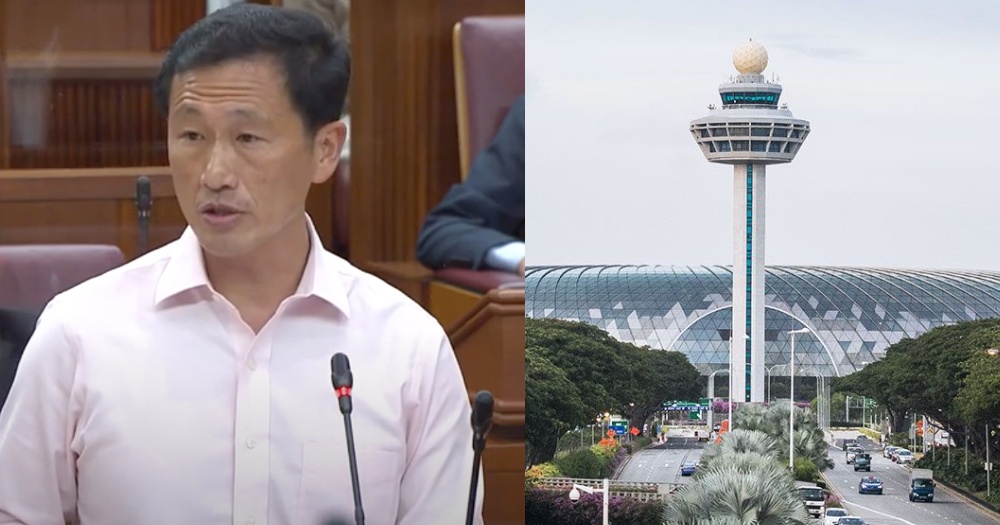Singapore will gradually reopen its borders and revive air travel, otherwise it risks losing its status as an air hub.
In a ministerial statement delivered in Parliament on Tuesday (Oct. 6), Transport Minister Ong Ye Kung unveiled the plans to lift border restrictions.
To minimise the risk of infection, the authorities will be placing guidelines for visitors, but they must not be onerous ones in order to encourage travel.
Situation has changed, testing capacity has improved
While the Covid-19 pandemic is still widespread around the world, Ong said that the situation today is different from when Singapore first closed its borders six months ago.
Due to the hard work of Singapore's healthcare workers, fatalities have been kept to a minimum and the virus situation is largely under control. Ong said that our track record "matters greatly" to other countries who are looking to restore aviation links.
Singapore's testing capacity is also currently far less constrained. In March 2020, only 2,000 tests could be performed per day, and they had to be reserved for critical public health purposes. But now, 27,000 people can be tested daily, with 40,000 per day by November 2020.
Technology has also advanced, and tests can be performed more quickly and less intrusively. These make it easier to "filter out" travellers with the virus either at the border or before they board the plane to come to Singapore.
No need for "onerous" restrictions like 14-day SHN
The upshot of this is that while previously, travellers had to be subjected to a lengthy 14 day Stay-Home Notice (SHN), such restrictions will no longer be needed.
Ong said, "In other words, on a selective basis, we can start to replace border closures and SHN, which is a big deterrent to travel, with tests." Other measures, such as tracking their movements and separating them from the community, could be implemented instead of the SHN.
He added that testing is the key to unlock air travel, and that having a Covid-19 test could be part of the routine of international travel, like checking your bags. To help facilitate this, Changi Airport is gearing up to swab up to 10,000 passengers a day, with a dedicated Covid-19 testing laboratory of its own.
Reviving air travel with four schemes
Singapore will revive air travel with these four methods.
Reciprocal Green Lane
Singapore will continue pursuing Reciprocal Green Lane (RGL) arrangements with other countries, having already concluded agreements with Japan, Brunei, China, Malaysia and Korea.
This is restricted to business and official travellers, who are subjected to pre-departure and on-arrival tests for the virus, and have controlled itineraries to minimise community spread.
Transfer passengers
These refer to passengers who do not pass immigration but are using Changi Airport as a mid-point stop to get to their final destination. Changi serves about 2,500 such passengers weekly, and the number will rise, while the proper safeguards are put in place.
Air Travel Bubbles
This is different from an RGL, which is limited to official and business travellers. Bubbles will be established with safe countries and regions and open to everyone.
Risk will be managed by requiring every traveller to abide by a Covid-19 test protocol, and by capping the number of travellers per day. They will also need to apply for an Air Travel Pass before the journey, which will allow the authorities here to plan for their arrivals and control the quota if necessary.
Ong named Hong Kong as one place that has announced its intention to establish ATBs with several countries, including Singapore.
Unilaterally lift border restrictions
Singapore will lift restrictions for countries with comprehensive public health surveillance, and with virus rates comparable to our own. Travel advisories for Singaporeans going to those countries will also be lifted.
Ong explained:
"Purely from an infection risk point of view, the risk of a traveller from these places carrying the virus when they arrive at Changi Airport, is no higher than that of a Singapore resident coming from Jurong or Sembawang. But as a precaution, we will subject these travellers to a COVID-19 test, to ensure they are free from the virus."
Ong said there is no need for "lengthy bilateral negotiations." The way it works is that Singapore agrees to lift restrictions, governments on the other side can decide if they want to allow their people to visit Singapore.
This has already been done for Vietnam, New Zealand, Brunei and Australia (excluding Victoria), although visitors from these countries are still in low numbers as travel is still being restricted. Ong described it as a "standing invitation."
Standing invitation
On the flip side, the UK has lifted restrictions for Singapore visitors, although because it has a relatively high Covid-19 incidence rate, Singapore isn't ready to allow travellers from the UK to freely enter Singapore. Ong added:
"But we appreciate the UK’s standing invitation. So once their infection rate falls and becomes comparable to ours, we will lift restrictions quickly, which will effectively restore travel between our countries."
Ong reminded the House that Singapore is small, and that we do not have a large domestic market to offer. What we can offer is our status as an air hub.
He added, "The message we want to send to the world is this – Singapore has started to re-open its borders."
Singapore cannot lose its status as an air hub
Ong touched upon the devastation that Covid-19 has wrought on Singapore Airlines (SIA) and Changi Airport Group (CAG). There are fewer air passengers today than there were when Changi Airport Terminal 1 first opened in July 1981.
Compared to pre-Covid-19, Changi Airport is serving 1.5 per cent of its usual passenger volume, and 6 per cent of the usual number of passenger flights. If cargo flights are included, that goes up to 17 per cent. Changi fell from the seventh busiest airport in the world to the 58th.
SIA had to retrench 2,000 people, and Ong said it is still not out of the woods. CAG has lost its revenue streams with the steep fall in passengers.
Ong cited Singapore's superior air connectivity as a major reason why companies choose to invest in Singapore. If that is lost, and our status as an air hub is lost, then so will our attractiveness as a place to invest. Therefore, steps to revive air travel have to be taken. Ong said:
"The status quo is therefore not sustainable for us. We cannot just wait around for a vaccine, which may take a year or two to become widely available. Even then, we do not know if the vaccine will work as expected. We need to take proactive steps to revive the Changi Air Hub, as a top national priority."
Related story:
We deliver more stories to you on LinkedIn
Top image via Gov.sg/YouTube and Changi Airport Group.
If you like what you read, follow us on Facebook, Instagram, Twitter and Telegram to get the latest updates.
